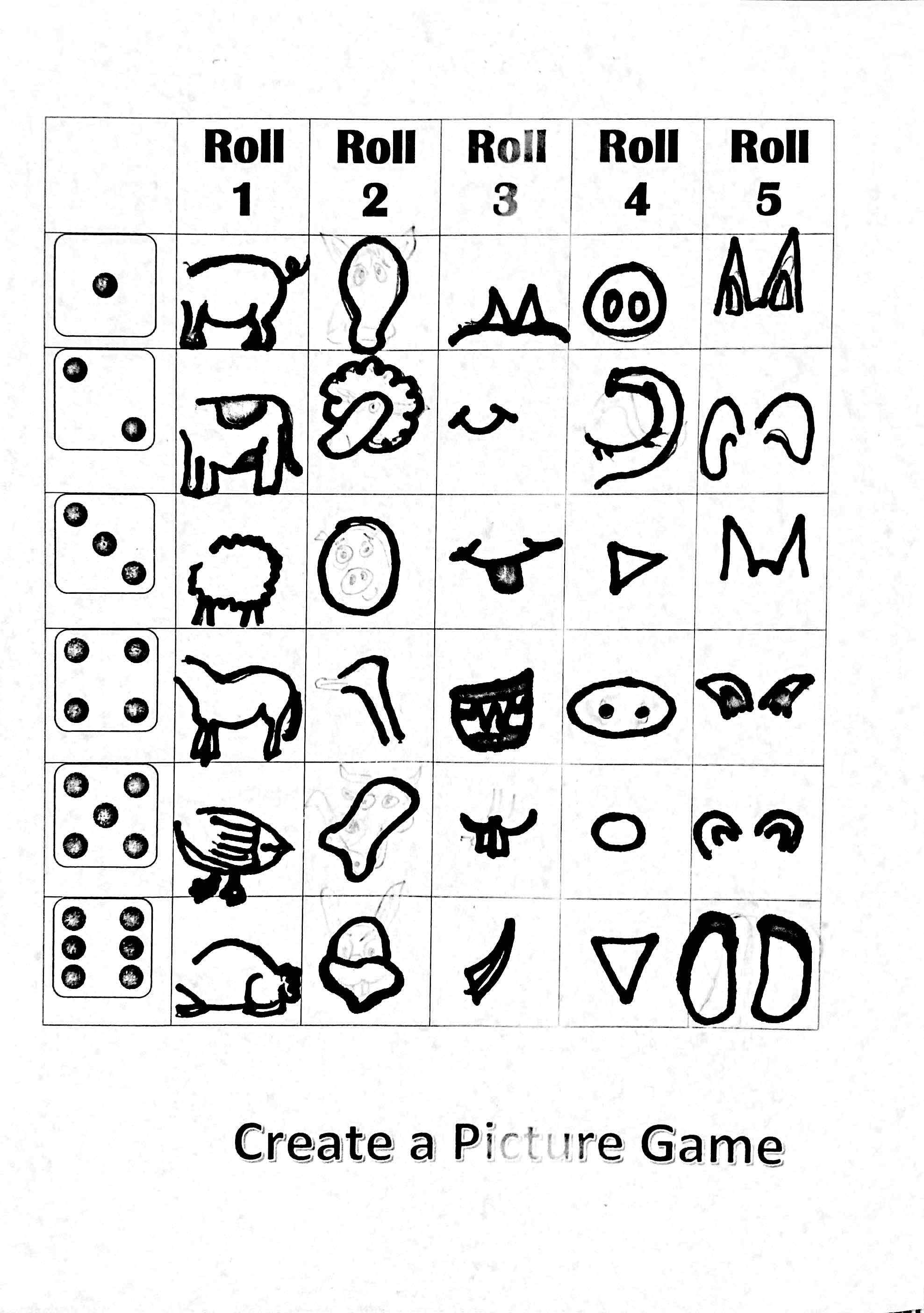Roll a Dice Game-Draw An Animal

Description
Roll a Dice Game/Reinforcer. Different animal bodies/body parts. Create an Animal.
Strategies and techniques
ARTICULATION: After a certain number of trials with sound/syllable/word/or sentence, client rolls the dice. Client then draws the shape that he/she rolled on each turn.
LANGUAGE: After a certain number of trials with any language target, client rolls the dice. Client then draws the shape that he/she rolled on each turn.
+Additional language targets after creation: compare/contrast, using adjectives to describe, body parts, clothing items, first/then, sequencing, following directions, colors, shapes, sizes... Tips: Client and therapist can both draw the animal. They can use different colors. The therapist purposely draws parts in different sizes/proportions. The client can then compare and contrast the two creations.
LANGUAGE: After a certain number of trials with any language target, client rolls the dice. Client then draws the shape that he/she rolled on each turn.
+Additional language targets after creation: compare/contrast, using adjectives to describe, body parts, clothing items, first/then, sequencing, following directions, colors, shapes, sizes... Tips: Client and therapist can both draw the animal. They can use different colors. The therapist purposely draws parts in different sizes/proportions. The client can then compare and contrast the two creations.
License
Additional information
Resource details

Description
Roll a Dice Game/Reinforcer. Different animal bodies/body parts. Create an Animal.
Strategies and techniques
ARTICULATION: After a certain number of trials with sound/syllable/word/or sentence, client rolls the dice. Client then draws the shape that he/she rolled on each turn.
LANGUAGE: After a certain number of trials with any language target, client rolls the dice. Client then draws the shape that he/she rolled on each turn.
+Additional language targets after creation: compare/contrast, using adjectives to describe, body parts, clothing items, first/then, sequencing, following directions, colors, shapes, sizes... Tips: Client and therapist can both draw the animal. They can use different colors. The therapist purposely draws parts in different sizes/proportions. The client can then compare and contrast the two creations.
LANGUAGE: After a certain number of trials with any language target, client rolls the dice. Client then draws the shape that he/she rolled on each turn.
+Additional language targets after creation: compare/contrast, using adjectives to describe, body parts, clothing items, first/then, sequencing, following directions, colors, shapes, sizes... Tips: Client and therapist can both draw the animal. They can use different colors. The therapist purposely draws parts in different sizes/proportions. The client can then compare and contrast the two creations.
License
Focus areas
- ST -> Phonology -> Syllable Shapes / Consonant-Vowel Combinations
- ST -> Phonology -> Phonological Awareness
- ST -> Expressive Language -> Basic Concepts
- ST -> Expressive Language -> Utterance Expansion
- ST -> Expressive Language -> Verbs
- ST -> Expressive Language -> Vocabulary
- ST -> Pragmatics / Social Skills / Life Skills -> Following Directions
- ST -> Receptive Language -> Adjectives
- ST -> Receptive Language -> Basic Concepts
- ST -> Receptive Language -> Categories
- ST -> Receptive Language -> Verbs
- ST -> Receptive Language -> Vocabulary
7 more focus areas. Click arrow to view all.
Evidence based practice citations
-
Phonological Awareness Intervention: Beyond the Basics
Author(s): Schuele, C. & Boudrea, D. -
What Are Basic Concepts?
Author(s): Super Duper
Grade levels
Grades PK - 8
Themes
None
Weekly Themes
None
Daily Themes
None
Blends
None
Phonemes
None
Resource slides
Create a free Ambiki account to preview the slides of this PDF resource.
